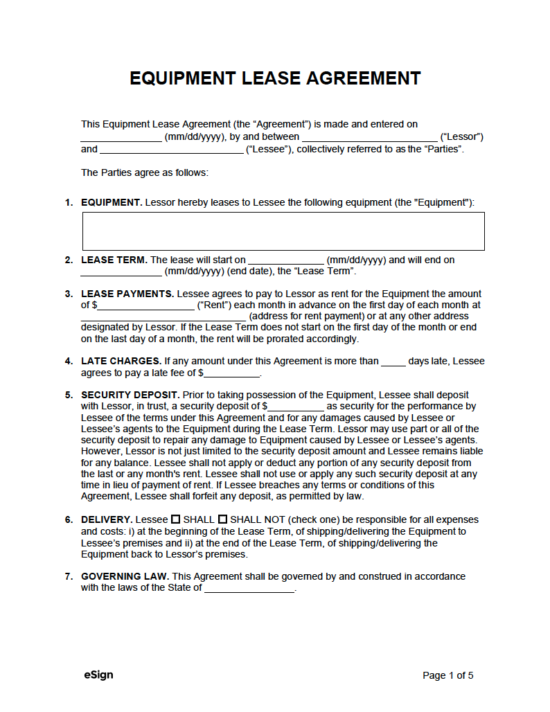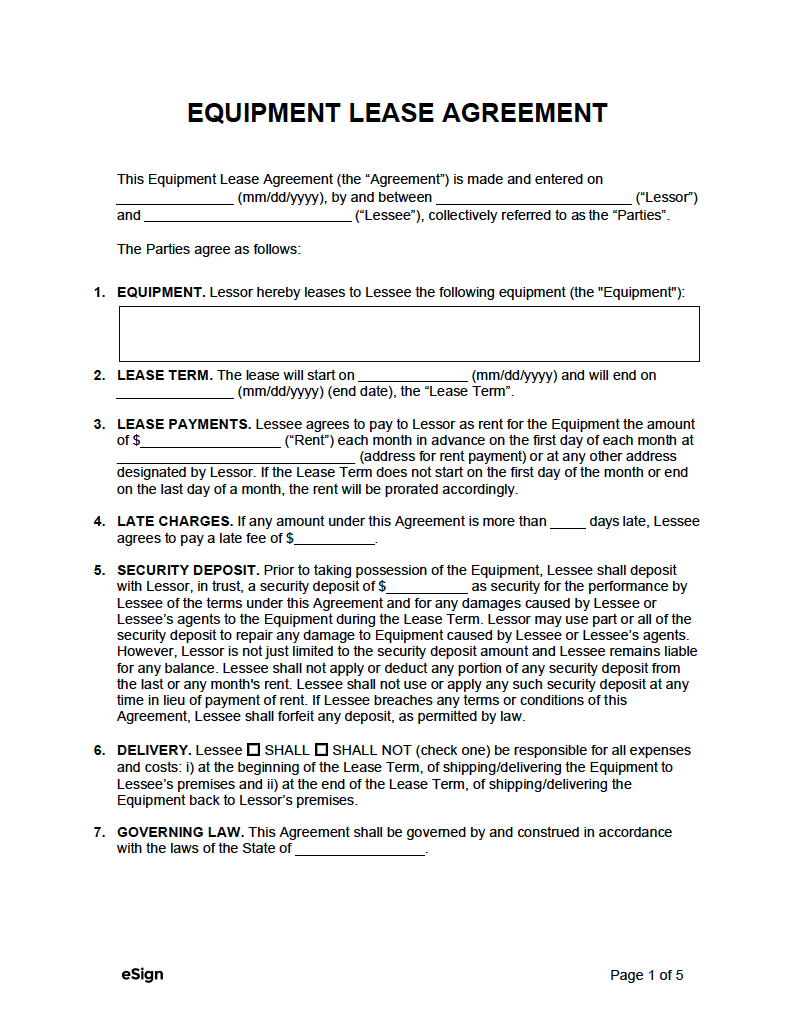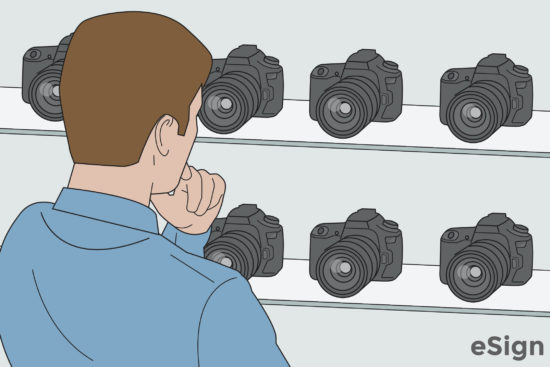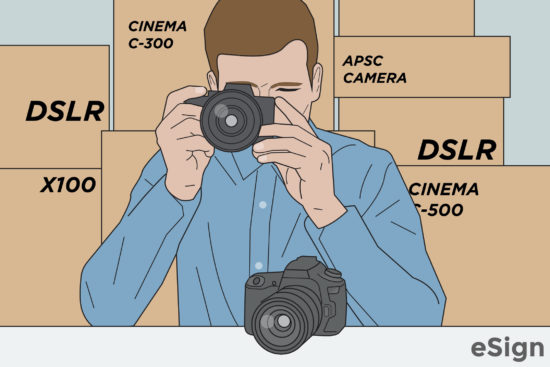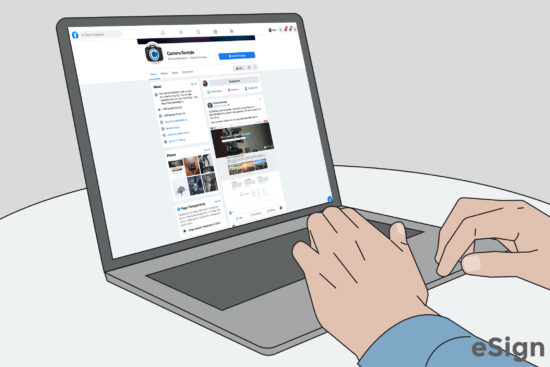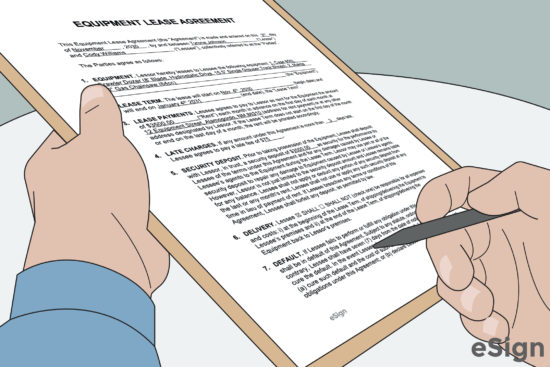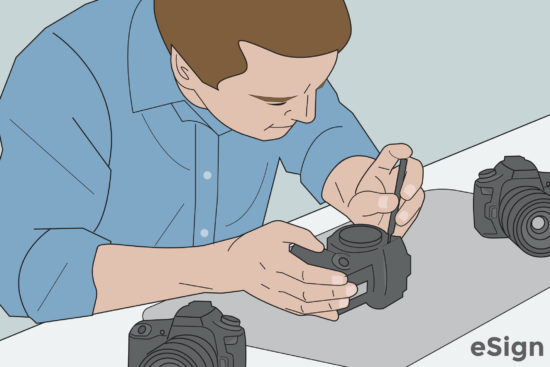Document Features
- Payment – Sets the rent amount the lessee must pay monthly, with fees imposed to compensate the lessor for late payments.
- Deposit – Requires a security deposit to be paid by the lessee as collateral for potential damages or other charges incurred by the lessor.
- Default – Provides the lessor with legal remedies (repossession, monetary compensation, etc.) should the lessee fail to adhere to the contract.
- Equipment Use – Establishes permitted uses of the equipment and the lessee’s obligation to keep it clean and well-maintained.
- Ownership – Defines the lessor’s clear ownership of the equipment and requires the lessee to return possession at the expiration of the term.
Equipment Rental Benefits
1. Cost Effectiveness – In construction, a general rule is that renting instead of buying equipment used less than 60-70% of the time makes more financial sense. While each industry has its own standards and “rules of thumb,” equipment rental allows companies to be flexible and unburdened by excessive loans.
2. Equipment Upkeep – While the renter is responsible for equipment maintenance during the lease, the rental company is generally responsible for equipment upkeep and replacement, potentially saving the renter a lot of money.
3. Access – Renting allows individuals to access high-quality equipment that would otherwise be unaffordable. This is a common necessity in creative fields like music and film, where artists often work with a limited budget.
How to Rent Out Equipment
Step 1 – Study the Market
Anyone that wishes to rent out equipment should ensure there will be room in the market they are looking to enter. If they are entering a heavily saturated market, they need to offer their rentals with a different approach, such as offering a low-cost alternative, high-end equipment, long-term rentals, and so on.
Step 2 – Purchase Equipment
Equipment can be purchased new or used. Depending on the type of equipment, the owner may need to finance it or start out with a few major products.
Once the rental business has been established, owners often buy less commonly used equipment to expand their collection.
Step 3 – Market the Rentals
To attract potential customers, the owner can use a number of different marketing tactics.
- Social media – With over 2.6 billion monthly active users, Facebook is a great website for creating a business page.
- Network – Looking into the local chamber of commerce is a great way to learn about new and established businesses that may need rentals.
- List it online – Equipment rental platforms such as EquipmentShare offer an easy means of reaching a wide range of potential customers.
Step 4 – Create & Sign a Rental Agreement
An equipment lease agreement keeps all of the parties on the same page in regard to the length of the lease, the rental fee, the frequency of payments, how the equipment will be used, etc.
Step 5 – Take Care of the Equipment
In between renters, the equipment should be serviced with clear-cut maintenance schedules. This is especially important for high-value rentals.
The most cost-effective way is to replace the part even if it doesn’t show obvious signs of wear. This helps to avoid making repairs in the middle of a leasing period.
